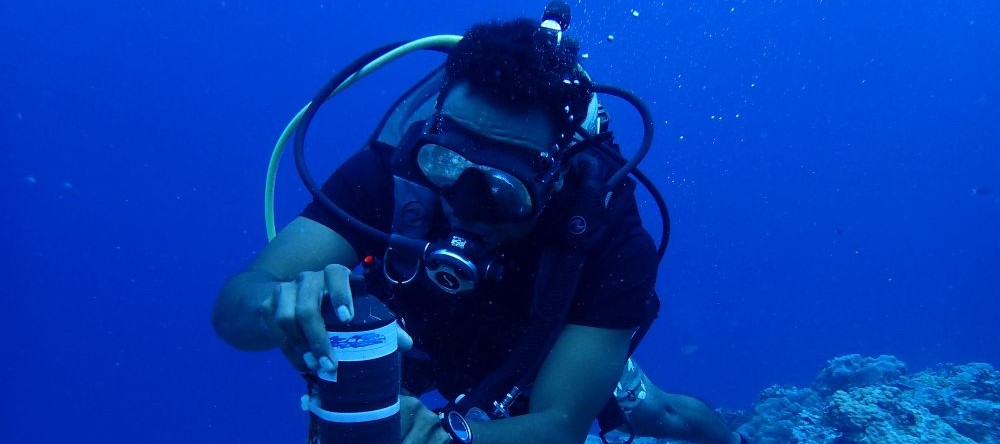- Research
PICRC Concludes Acoustic Tagging Project with Stanford University
The Palau International Coral Reef Center (PICRC) has officially concluded its acoustic tagging project, which began in August 2022 in collaboration with Stanford University. This research focused on tracking the movement patterns of the longnose emperor (Melangmud) and two spot red snapper (Kedesau) to and from a spawning aggregation site using acoustic tagging technology.
To track fish movement, researchers implanted small acoustic tags into the body cavities of the fish. These tags emit signals that are picked up by acoustic receivers deployed across various reef locations. When a tagged fish swims past a receiver, its location, date, and time are recorded, allowing researchers to determine the fish’s travel patterns and aggregation behavior.
A total of 32 acoustic receivers were deployed along the southwestern reefs of Palau, particularly around Mutiaur (Shark City). During the study period, researchers tagged 39 longnose emperors and 47 two spot red snappers. Range testing was also conducted to assess the effective detection distance of the tags. All receivers were then retrieved between April 15th and 17th, officially marking the conclusion of the project.
Fish aggregation sites are often targeted by fishers due to the high likelihood of catching large numbers of fish in a short period. However, this practice can significantly contribute to the decline or collapse of fish aggregations, as previously observed with groupers in Palau. Studies like this are critical for understanding the timing and location of fish aggregations, helping to inform management decisions and establish effective protection measures.
PICRC will analyze the data collected on longnose emperor movements and will publish a report within the next year. Stanford University will carry out a similar analysis for the two spot red snapper data. The results from this study will contribute valuable information to the Koror Southern Lagoon Coastal Fisheries Management Plan, which includes proposed protection measures for spawning aggregations of these two species.
We are grateful to the Koror State Government for their support in enabling PICRC to carry out this important research, particularly in the Mutiaur area. Their collaboration has been instrumental in advancing our understanding of spawning aggregations and supporting the development of effective management strategies.
This project was made possible through the generous funding from the Micronesia Conservation Trust – Margaret A. Cargill Philanthropies (MCT-MACP) Small Grants Program and Irish Aid’s Our Shared Ocean Program.


